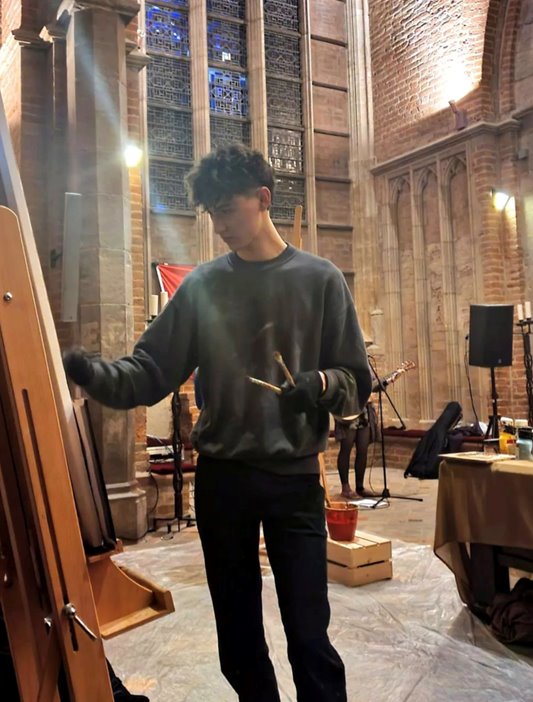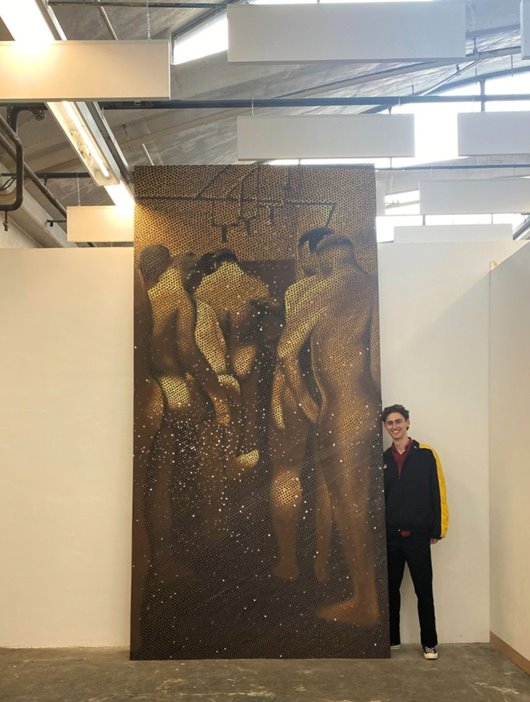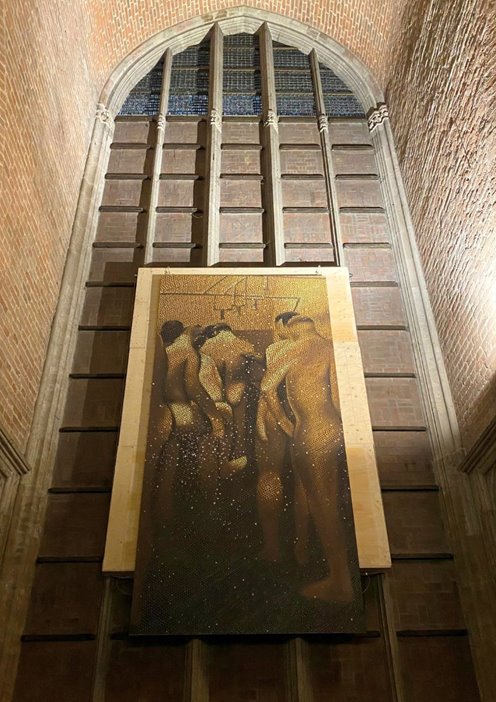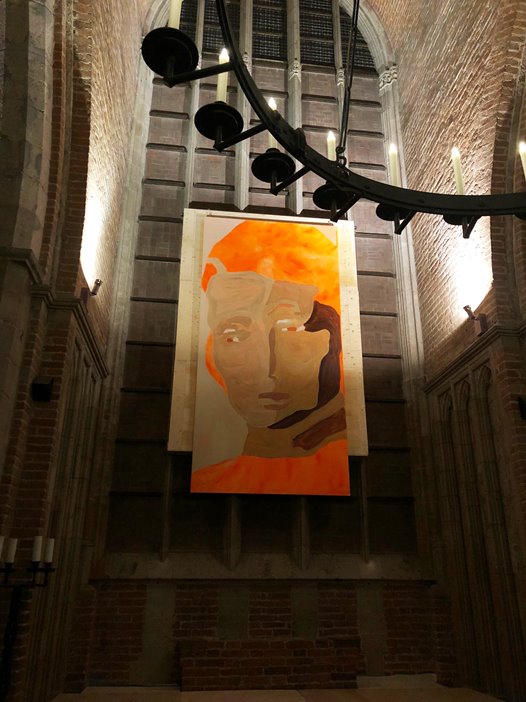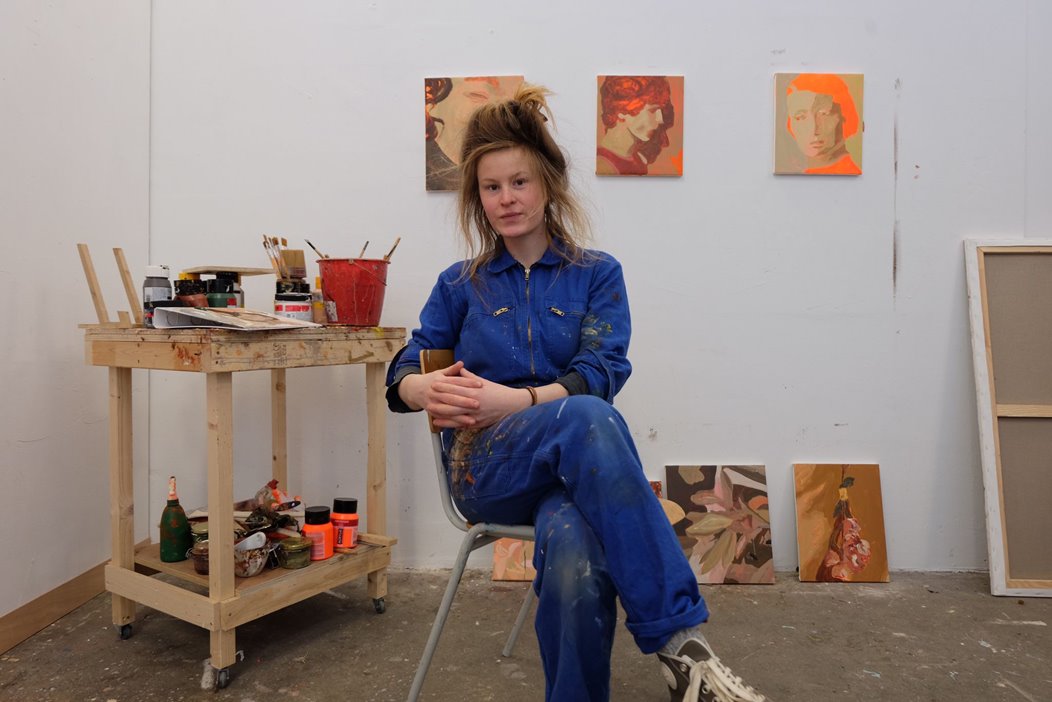Last week, Loes’s painting was finally put on the wall. It’s as big as 4 by 2 metres. ‘A huge challenge’, she says with a smile. ‘I started working on it in the summer, and when the academy closed for the holiday, I had planned to finish it at home. But I had underestimated how big it really was. We had of course looked in advance to see where the work would be put, but the Dom is such a huge place, that we didn’t realize just how big the work really was.’
Bright colours
It took Loes half a day to mount the canvas, but now that she can see her work on the wall inside the Dom Tower, she feels very proud. ‘Yes, it makes me happy. Because the room is quite dark, I decided to use bright colours. That worked out well: the canvas almost seems to emit light.’Loes’s work can still be seen during the daily guided tours, until half January. Fellow student Onno Meeuwsen has already gone before her, and also made such a huge painting. His work is about his experience with sexual orientation and masculinity. With the painting, he aims to raise attention for a period in the history of Utrecht that is unknown to many: the sodomy trials of 1730-1731, where 289 men were prosecuted for their homosexuality.
Loes decided to leave the interpretation of her work to the audience. ‘I would like to have the beholder look at my painting in the same way that I listen to classical music: I have no desire to get to know the composer, nor to decipher the title. What we see, or hear in it, has to blend with a certain memory or feeling.’
She paints portraits and objects from her direct environment, which are fragments from a memory. These fragments that Loes shows in her paintings, serve as a memory archive for her. Captured on her canvas, the memory remains meaningful to her.
